You can trust Cyclingnews
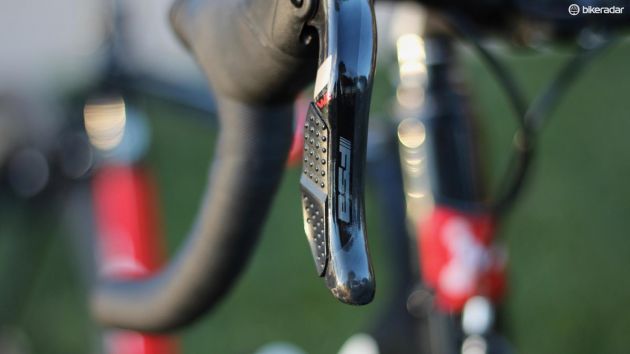

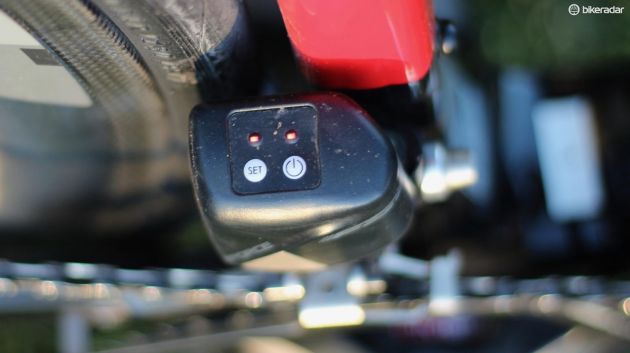
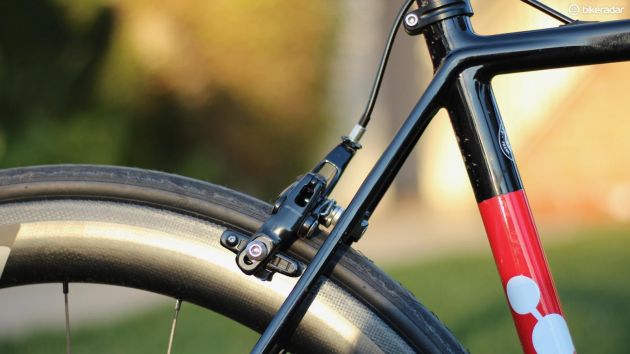
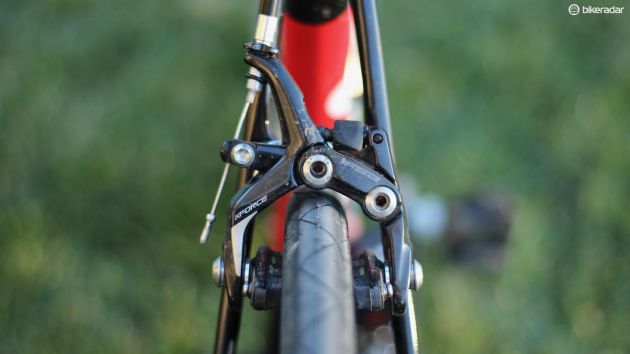
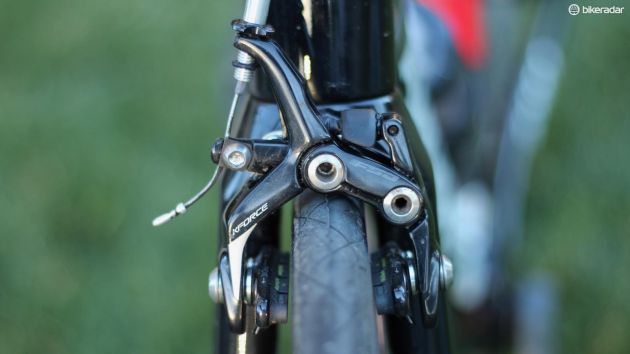
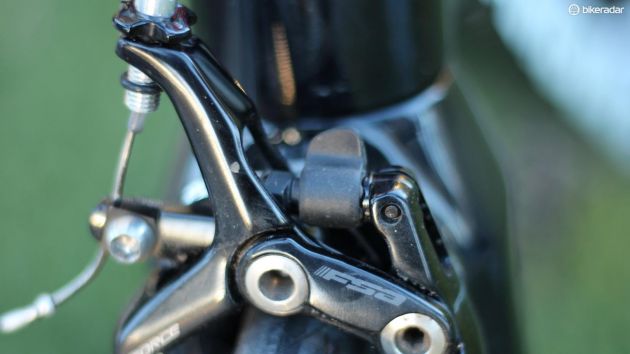
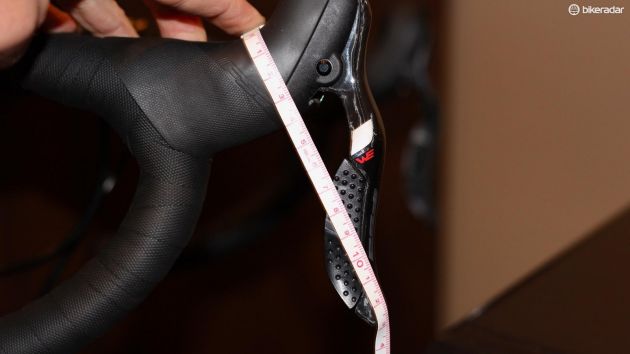
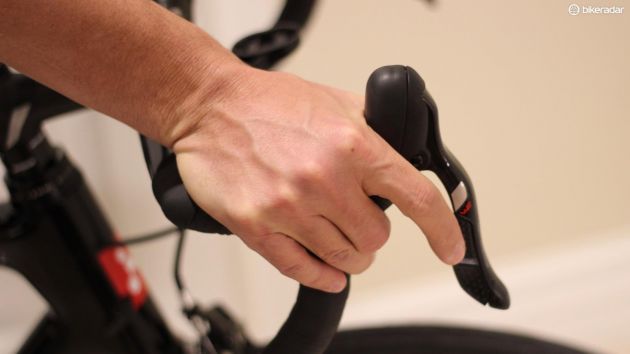
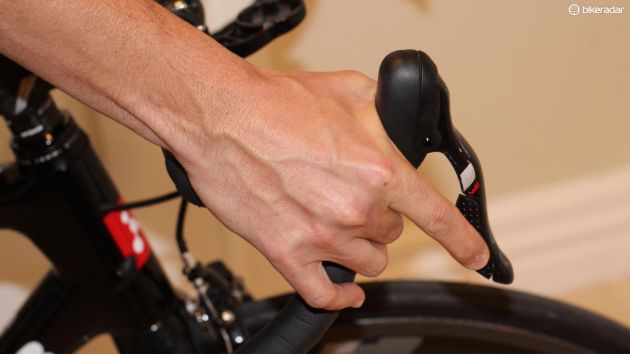
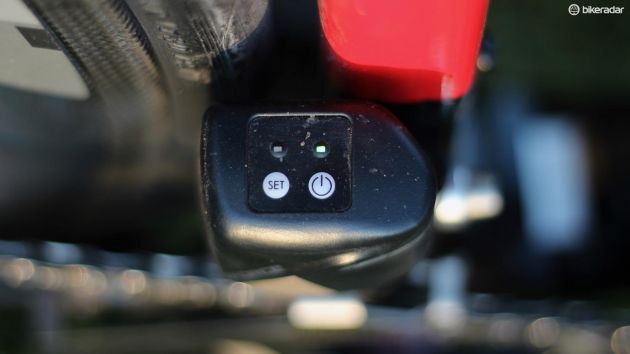
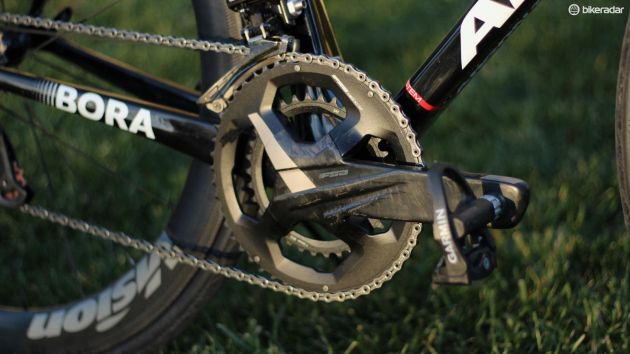
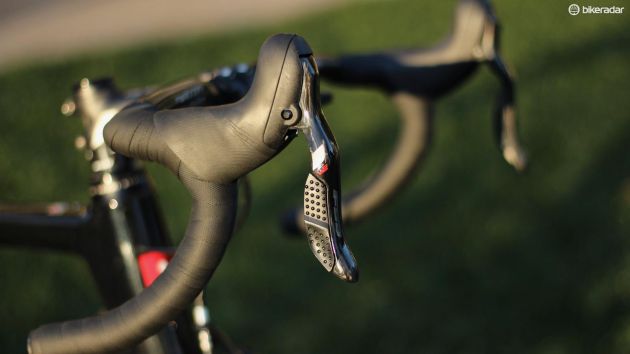
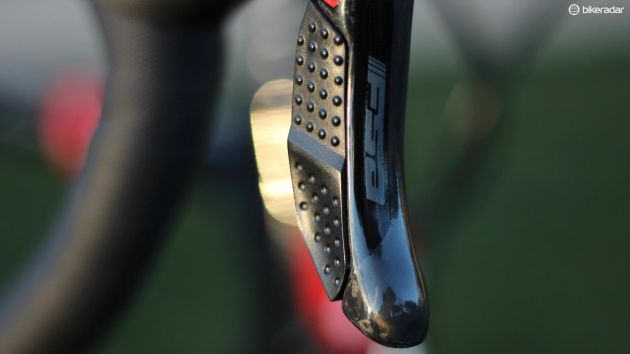
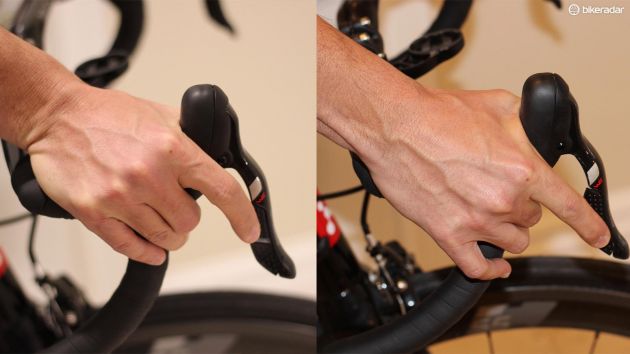
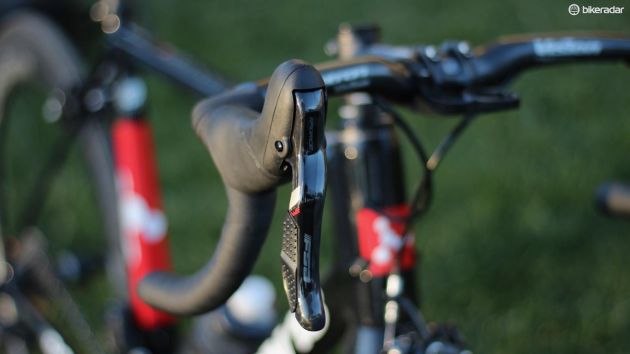
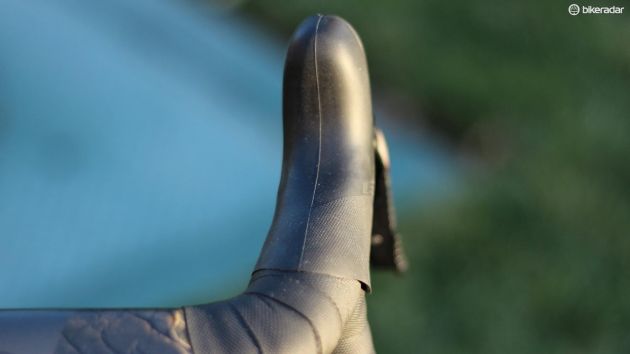
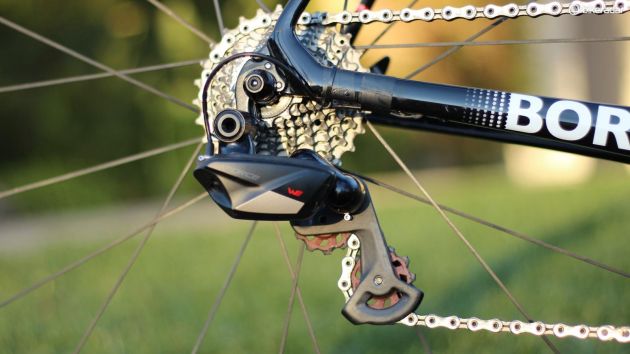
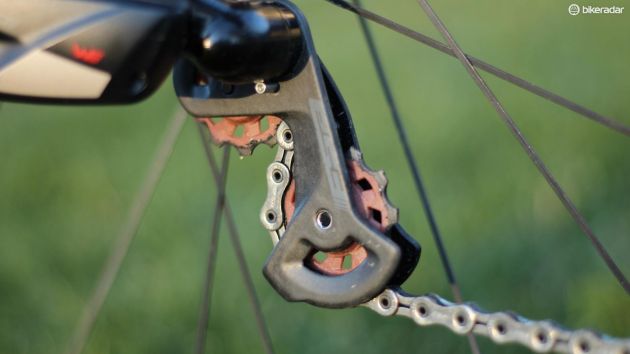
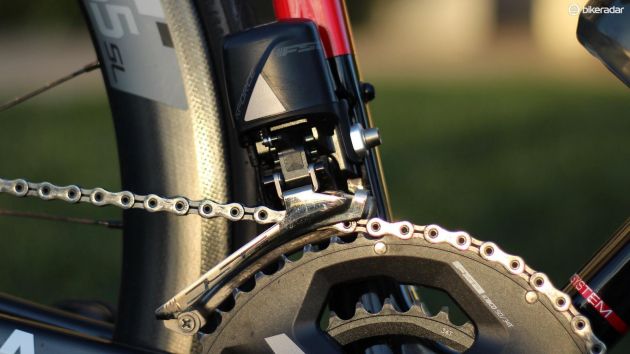
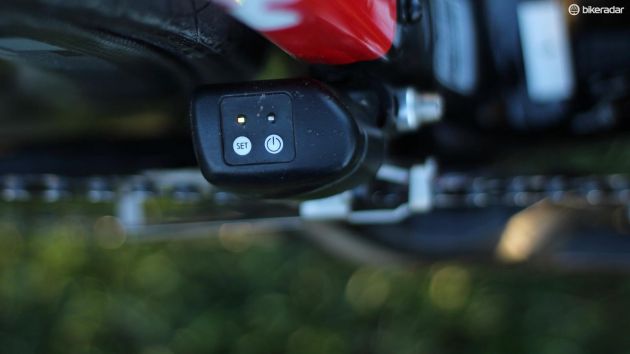
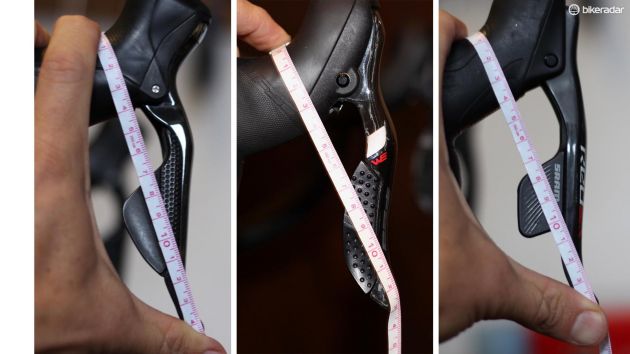
This article originally appeared on BikeRadar
The wireless FSA K-Force WE group has begun to pop up in final prototype form and I got a chance to ride it this week in California. The derailleurs shift smoothly and decisively, the levers feel good in the hands, and the toggle shift buttons are sensitive and clearly differentiated by texture and shape. However I found the lower shift button to be somewhat difficult to reach from the hoods and the prototype shift mapping gave me a little grief, freezing up for a second after successive shifts up onto the largest cog.
FSA tech manager Jeff Donaldson reassured me that the specific shift behavior patterns are still being ironed out — including a pause in front-derailleur auto-trim after rear-derailleur shifts — and that the final version of firmware will not have any such hiccups.
The wireless group will soon have an accompanying app (Android first, then iOS) with which you can customize each button's function and the speed of the shift. That app is not yet complete, so I couldn't test it.
The hardware, however, appears to be in final, polished form, including the new dual-pivot brakes that can handle up to 28mm clinchers, FSA claims.
FSA K-Force WE highlights
- Electronic 11-speed road group
- Wireless shifting, but derailleurs wired to central battery
- Claimed 2,090g group weight
- Toggle-switch shifters that are programmable for function (front, rear, up, down) and speed
- Front derailleur auto-trims to rear derailleur's position
- Two lever size options — an important detail, I believe
- No price yet, but will be "directly competitive with Shimano Di2 and SRAM eTap", FSA claims
- Claimed 4,000-6,000km battery life
WE shifting: the good points
On my 40 mile test ride, the rear derailleur shifted decisively if not super speedily from one cog to the next. You can hold down the button for multiple shifts, but it seemed that rapidly tapping the button produced faster shifts. This and the points below will likely be tweaked in the coming weeks. At an industry event in California, Donaldson was working with Jelly Belly pro Ben Wolfe, who was on the group for the first time and listening to his feedback.
Even when I was standing while pedalling, the rear derailleur would dutifully move up and down the cassette without a glitch.
The front derailleur surprised me with its solid strength. Shifting from the small ring to the big while standing up didn't faze it in the slightest. (This is not good practice for everyday riding, but it is a great way to test a front derailleur.) The cage efficiently and firmly moved the chain like a bouncer at a high-end nightclub escorting an unruly patron to the door.
The WE front derailleur is notably quieter than Shimano Di2 and SRAM eTap. There is a faint motor noise, but not the pronounced 'ziiip' that the other two produce. Campagnolo's EPS front derailleur can be tuned for speed and thus noise.
The WE shifter has a toggle switch outside and behind the brake lever. The top half is effectively one button; the lower half another button. When the app is finished, they will be programmable. As I tested it, the top button moved the chain onto a larger cog or ring and the lower button did the opposite. On the right lever, this felt natural. On the left lever, it was counterintuitive to me for the top button to drop the chain onto the small ring.
A common complaint about Di2 levers is that the two buttons are not distinct enough in feel, especially when wearing gloves. FSA's WE buttons are clearly different in appearance and feel. The top is flat with protrusions. The bottom is concave with divets. And the two are divided by a pronounced ridge.
WE shifting: the bad points
I have three main gripes with WE shifting in its current form. One will be remedied with firmware updates, I'm told, the second could likely be addressed with the coming shorter lever option, and the third could just be a matter of adaptation to the system.
When I was shifting the rear quickly across multiple cogs, the front would wait for a good second or perhaps more after the last shift before adjusting itself to prevent chain rub. (Don't get me wrong, auto-trim is a great thing on electric drivetrains.) This didn't bother me, but it was noticeable. My complaint was that on several occasions when I would shift quickly up the cassette to the largest cog, the system would freeze for a second. Both lights on the system would turn yellow, and I couldn't shift front or rear. Then, after roughly a second, the lights would disappear and I could shift again.
Donaldson said both issues would be addressed in coming firmware updates. He explained that FSA is still experimenting with different timing options.
The second issue is a bit trickier; the top/bottom design of the shift buttons puts the very top of the lower button 9cm from where your hand nestles atop the hood. I found myself having to externally rotate my hand a small amount to comfortably reach the button. I checked Di2 and eTap levers — I'd never thought to measure this distance before — and found 9cm to be the rough center for both. Campy's EPS levers are even shorter, with the center of the shift paddle at about 8.5cm. (See photo in gallery above.) But whereas FSA's WE requires you to reach below that 9cm mark to shift the lower button, with Shimano, SRAM and Campagnolo you only need to reach the closest point, which is about 7.5cm, to shift in either direction (and just hit the much closer thumb lever for Campy). It's a small but noticeable difference.
FSA will have a second lever option that is 6mm shorter. Sight unseen, I would choose this option. (This is the part, dear reader, where you insert a Donald Trump hand-size joke.) I had a few friends try the levers, and they found the lower button to be a bit of a stretch, too.
Finally, the top button is very easy to press — perhaps a little too easy. I accidentally shifted the front a couple of times just when changing hand position, moving my fingers from in front of the levers to behind them when standing up to climb. Another test rider said he accidentally shifted when rattling over bumps with his fingers just hanging loosely around the levers. This could very well be an adaptation thing.
WE dual-pivot calipers, cranks, cassette and chain
FSA stepped up its rim braking game with new dual-pivot 299g (claimed) calipers. While I found them noticeably stronger than FSA's past rim brakes, I couldn't really test them at length because the carbon wheels and the brake pads screeched like a beach full of dying seals. I believe that toeing in the brake pads would have helped the cause considerably, but I chose to focus on testing other elements of the group instead of fiddling with the brakes in the limited time I had.
The WE calipers can take up to 28mm clinchers, FSA claims, and feature a nicely svelte overall profile in spite of this capacity and the stout arm design. The quick release lever is somewhat hidden at the center of the caliper. It was a little stiff to operate, perhaps because of the tight quarters and difficulty of getting good leverage.
FSA is no stranger to cranks, and the carbon WE model looks sharp, I believe. Aesthetics aside, FSA certainly diversified the options here: six crank lengths, all three major chain ring combinations, and a BB386EVO spindle that works with all major frame designs (albeit with an adapter, often).
FSA will offer three cassette options: 11-23, 11-25 and 11-28, although the rear derailleur can handle up to a 30t large cog. Made with titanium, carbon and steel, the 11-23 weighs a claimed 257g.
Wrapping up the group is a 246g (claimed) nickel-plated chain with hollow pins. While I'm not sure how exactly to test a chain on a single ride, I can say it ran smoothly and quietly, even when I was shifting stupidly, such as small-to-big-ring front shifts under heavy load.
K-Force WE pricing and availability
FSA does not yet have a set price, but says the group will be directly competitive with SRAM eTap and Shimano Di2.
The wireless group will be used by the Cofidis, Direct Energie and Jelly Belly pro teams this season.
Availability has not yet been announced. This review will be updated as soon as we get more information.
Early verdict: strong signs of promise, but refinement needed to compete with Di2 and eTap
To be frank, I didn't really have any expectations when I hopped onto the Lapierre with the K-Force WE group. With iterations of Shimano, SRAM and Campagnolo groups, I go in with a fair amount of bias based on years of past experience. I had none of that here. And the first impressions were mostly very positive.
The group looks polished. Yes, the brain atop the front derailleur is enormous, but otherwise the group is pretty svelte. The brake levers and the hoods feel great, both in shape and texture. The front shifting, I'd argue, feels stronger than eTap. The rear shifting is precise if a bit deliberate. After much deliberation and conflicting feedback from test riders, FSA went with silent buttons, as opposed to something with audio feedback like the eTap system.The brake calipers are promising, but I need more time to investigate.
The primary to be decided sections concern the shifter ergonomics and shift mapping. Based on just a single ride, I'd guess that the not-yet-released shorter levers will be more popular than the current model. I would hope that the accidental shifts would be eliminated through more experience with the bike, but perhaps recessing the top button slightly could help. Finally, the multi-shift pauses are mildly concerning, but FSA seems to have a fix in hand.